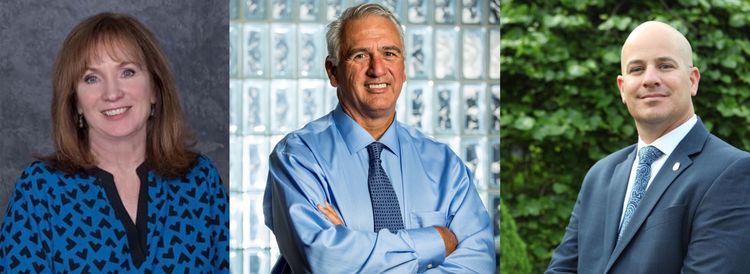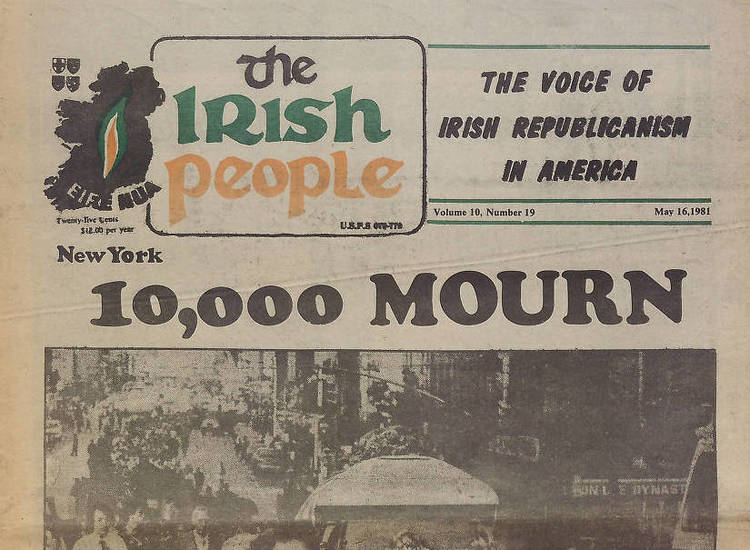The statue of Mary Jemison at Letchworth State Park, N.Y.
By Geoffrey Cobb
Not far from the site of the battle of Gettysburg, Pa., a statue erected in the 1920s honors Irish-American settler Mary Jemison, depicting her dressed in the Native American clothing. Jemison’s tale of abduction and adoption by Native Americans is one of the most interesting “captive stories” ever published, telling the fascinating story of an Irish American woman who adopted the Native American lifestyle.
Jemison was born mid-Atlantic in 1743, on board the “William and Mary,” which carried her parents, Thomas and Jane Jemison, from Ireland to Pennsylvania. After landing in Philadelphia, they joined other Scotch-Irish immigrants, heading west. The Jemisons squatted on land controlled by the Iroquois Confederation, a powerful league of six regional tribes. Mary grew up on a frontier farm and later fondly recalled a childhood full of hard work, but also the love of a family that had six children.
At age twelve, the Jemisons became a casualty of the French and Indian War, begun in 1754, pitting the British and their American colonists against the French and their Native American allies. One morning in 1755, a raiding party comprised of six Shawnee men and four Frenchmen attacked their isolated farm. Her two older brothers escaped, but Mary, her parents, a visiting young boy and the rest of the family were taken captive and marched off into the woods. One of the Shawnee beat them with a whip, frequently lashing the children to make them keep up. Deprived of water, whenever the parched children cried for water, their captors made them drink urine. Separated from her parents and siblings, Mary feared they would be murdered and scalped. Her worst fears were confirmed when she recognized the hair of her parents amongst the raiders’ scalps. Unable to communicate with her captors, Mary suffered extreme anxiety, while sobbing about and mourning her family’s fate. Her captors brought Mary and the boy to present-day Pittsburgh, then under French control and known as Fort Duquesne.
Mary and the boy were spared, because they were suitable for adoption. Unbeknownst to Jemison, there was a Native-American custom whereby when a warrior was killed or taken prisoner in battle, a prisoner, was offered as a replacement to the dead warrior’s family. Her captors turned her over to two Native women, who stripped her of her torn clothes, washed her in the river, and dressed her in new Native American clothes. Seated in the "center of their wigwam," listening to Seneca songs, Jemison was unaware that she had been adopted into a Seneca family.
Renamed Dehgewanus, meaning in the Seneca tongue, a pretty or handsome girl, or a pleasant thing, she was forbidden to speak English and her adopted sisters quickly taught her their language and the duties of a Seneca woman. Mary was almost repatriated the next year when, accompanying her captors to a parley at Fort Pitt, some colonists there inquired about her, raising the apprehensions of Mary's adopted sisters, who immediately left with her.
Soon after, a group of Delaware Native Americans came to settle with the Seneca and she learned that she was engaged to one of the Delawares, named Sheninjee. The Fourteen-year-old Mary and Sheninjee were married according to Native American custom. In her autobiography, Mary explained her feelings towards her groom: “The idea of spending my days with him, at first seemed perfectly irreconcilable to my feelings: but his good nature, generosity, tenderness, and friendship towards me, soon gained my affection; and, strange as it may seem, I loved him.” She added of him fondly, “Sheninjee was a noble man; large in stature; elegant in his appearance; generous in his conduct; courageous in war; a friend to peace, and a great lover of justice.”
Jemison became fully assimilated into Seneca culture and gave birth to a girl in 1761, but the infant soon died. She then gave birth to a son, whom she named Thomas after her father. The following summer, with her baby on her back, Mary and Shenijee started a remarkable journey. Worried that the end of the war would mean a return of captives, and the loss of his young wife, Shenijee decided to go to the Seneca homeland along the Genesee River in western New York. On their trip there, tragedy struck. Shenijee left her to hunt and trap, but took ill and died. Dehgewanus became a widow in a strange land. She considered leaving and returning to live amongst the settlers but feeling that her son ''would be forever fatherless there, in that white country,'' she decided to remain with the Natives. Shenijee’s relatives soon made a home for her and her infant son at Little Beard’s Town near present day Cuylerville, N.Y.
In 1765, she remarried a Seneca warrior named Hiokatoo, with whom she had six more children, all of whom took her surname. She lived happily with her family until the American Revolution. The Seneca, siding with the British, became targets of the American army. Hiokatoo was a leader in the Cherry Valley Massacre of American settlers in November 1778, and the next year, an American army of five thousand soldiers invaded with their main target being Little Beard’s Town.

One of three fictionalized treatments of Dehgewanus’s life.
Reaching the Genesee Valley, The army began to burn the Seneca’s fields and homes. As the enemy approached, Dehgewanus and her family fled into the forest, where they found shelter with two runaway slaves. Following the war, the Seneca were forced to negotiate and forfeit much of their homelands. With her skill in English, Dehgewanus helped translate and advise the Seneca. In return for twelve reservations and payments, the Seneca sold most of their homeland to settlers, however one of the remaining areas was the land where Dehgewanus and her family lived. Remaining in their native valley, though, proved to be a struggle in an increasingly white world. Dehgewanus paid a heavy price — three of her boys were murdered between 1811 and 1817. Most of her neighbors, however, respected the Seneca woman they called the “Old White Woman of the Genesee.” No one in need was ever turned away from her cabin door, and she was noted for her generosity, cheerfulness, and vigor well into her 80s.
At the age of nearly 80, Mary told her story to a local minister, Rev. James E. Seaver, who noted that she still retained an Irish accent. He published her story in 1824, and it soon became a classic of the hugely popular Captive literature. With white settlement growing too much for Dehgewanus, she sold her land, moving to the Buffalo Creek Reservation, where she died on Sept. 19, 1833, at the age of 90. Forty-one years later, with the Buffalo Creek Reservation having been sold, and her burying ground under threat, Dehgewanus’s grandchildren approached William Pryor Letchworth, a local businessman who owned her former valley, asking for his help to bring the bones of their grandmother back to her beloved home. He agreed and she was reburied on his estate. When he died he ceded his land to New York State for the creation of a park. A statue of Dehgewanus in Letchworth State Park, erected at her grave in 1910, honors this unique woman.
Americans remain fascinated with her story. Three fictionalized accounts of her life have been published and she is the subject of numerous blog entries. Her autobiographical narrative was re-published by the University of Oklahoma Press in 2015 and the Irish Times featured her in a 2017 series on unique lives of the Irish abroad.









